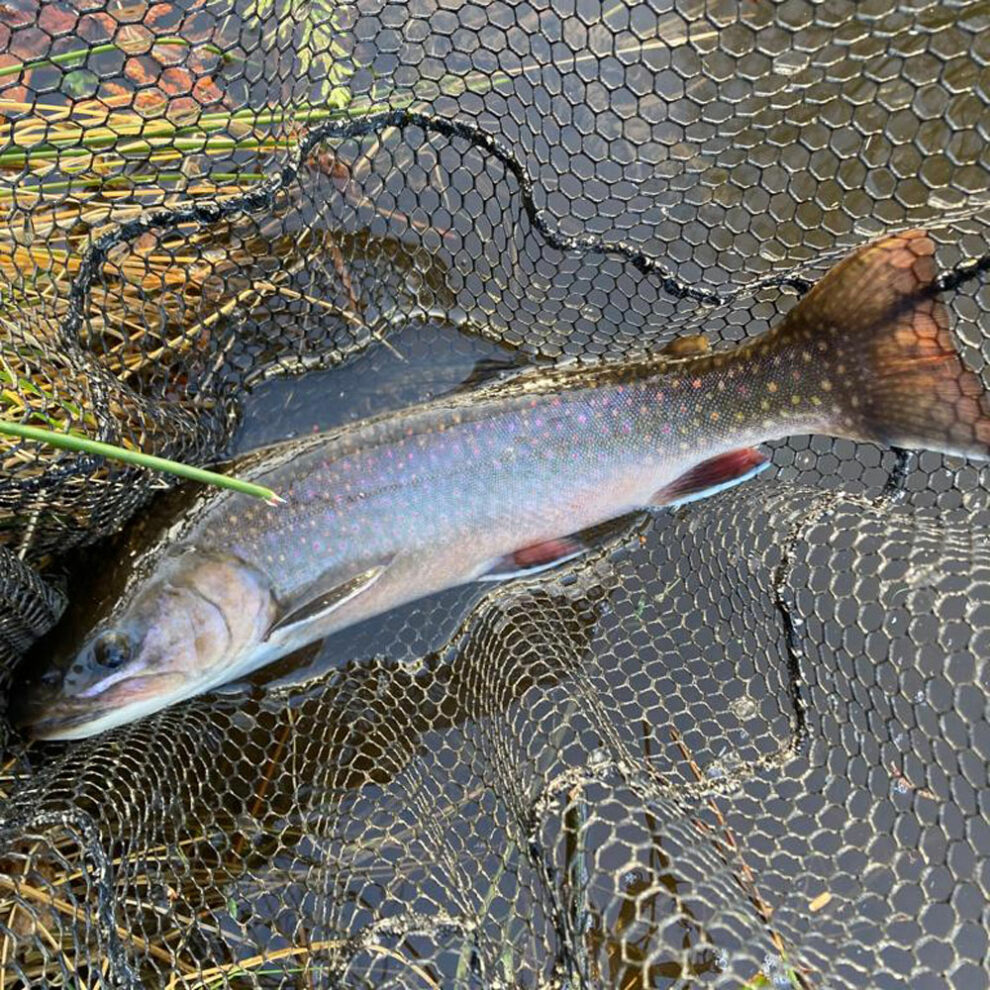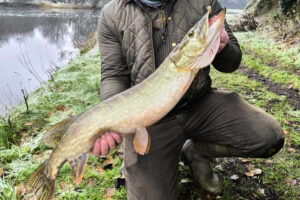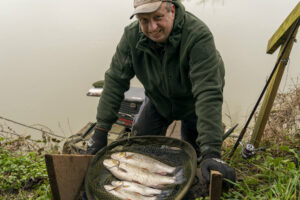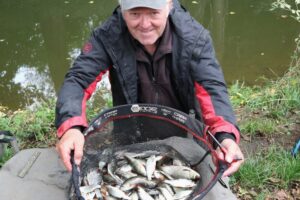While waiting for the first frost in a while to lift off the car, a quick weather check said bright sunshine and no wind all day. Not the best of starts, but Bankhouse must be one of the nicest fisheries you could be on a day like this. It’s a gorgeous little venue that must be one of the most well thought out two acres you could ever dream of fishing. More on that later.
Unfortunately, it wasn’t the best of starts for my friend Jason. As I pulled into the car park, he was waving his coat around like a matador, pointing to the tree above. The story went that a local pigeon had dropped its breakfast down his back and made a bit of a mess. Today wasn’t a day to be leaving warm clothes in the car, so a few paper towels got rid of the bulk, and onto the lake we went.
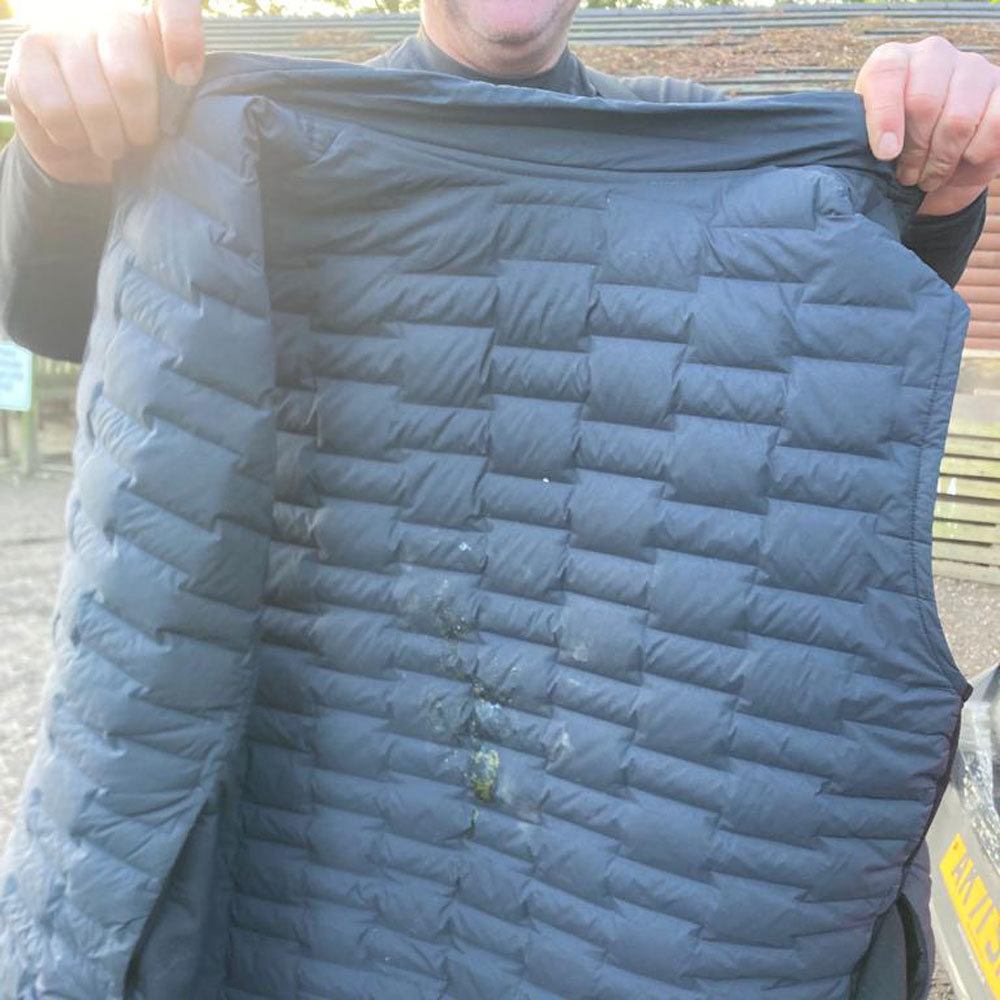
It looked like there were only three lads already there, so the plan was simple – spend 5 minutes on each platform and move regardless of success. If a fishery is busy, you can tell where the fish are from the bending rods. If it’s quiet, you need to map things out for yourself as quickly as you can. Make a note of the spots you got takes and come back later. It also helps if you can find the deeper areas and drop offs, so the map of the lake from the fishery website was really handy (see photo).
Positioned just off the M6 near Lancaster, Bankhouse is a really well established fishery with 12 small islands and a series of pontoons and platforms that make it feel like every spot you fish is a small private lake of its own. Don’t come here if distance casting and open water is your thing – this is an intricate fishery where you are going to have different types of feature in every location. There’s even a small flow moves around all the islands courtesy of the stream that feeds it. Add to this the variety of trout that swim in the peaty waters combined with their mixed size range, and you really don’t know what’s coming next. There are rainbows, blues, and browns as standard. But also Tigers and Spartics to give a nice surprise from time to time.
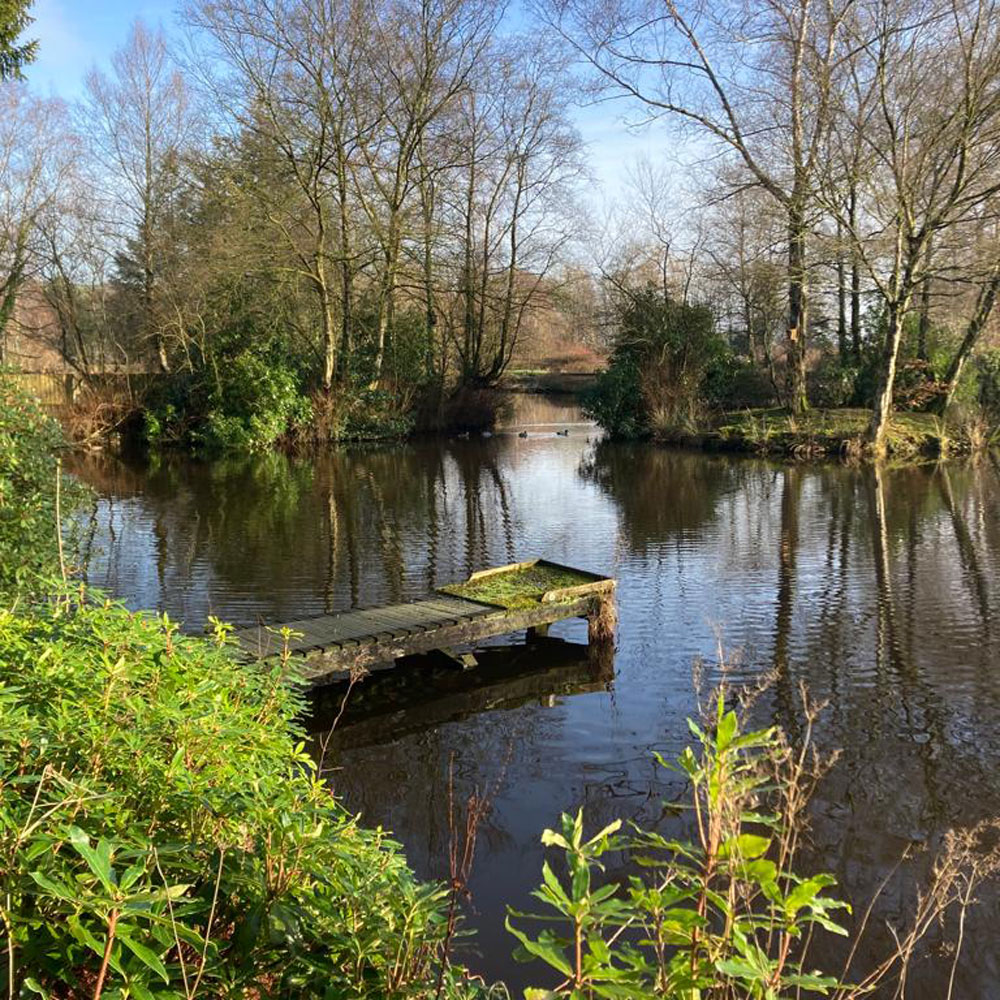
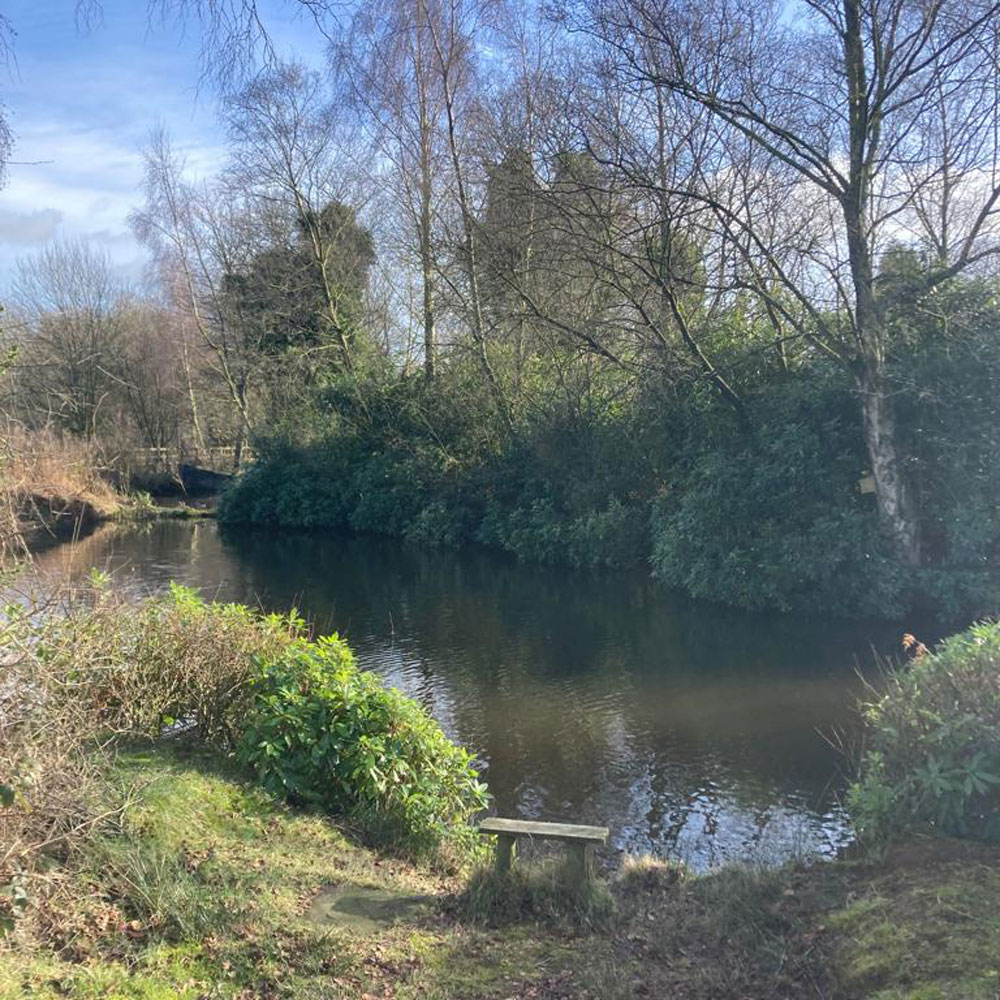
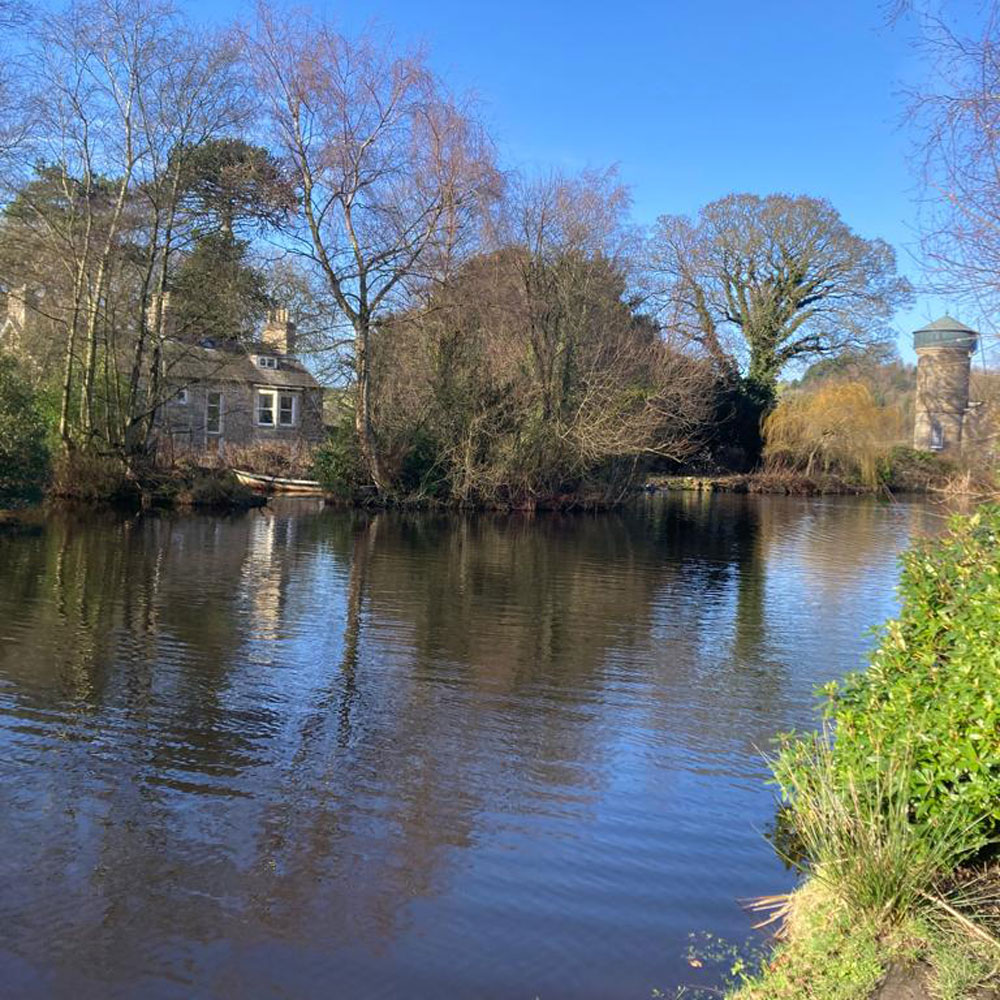
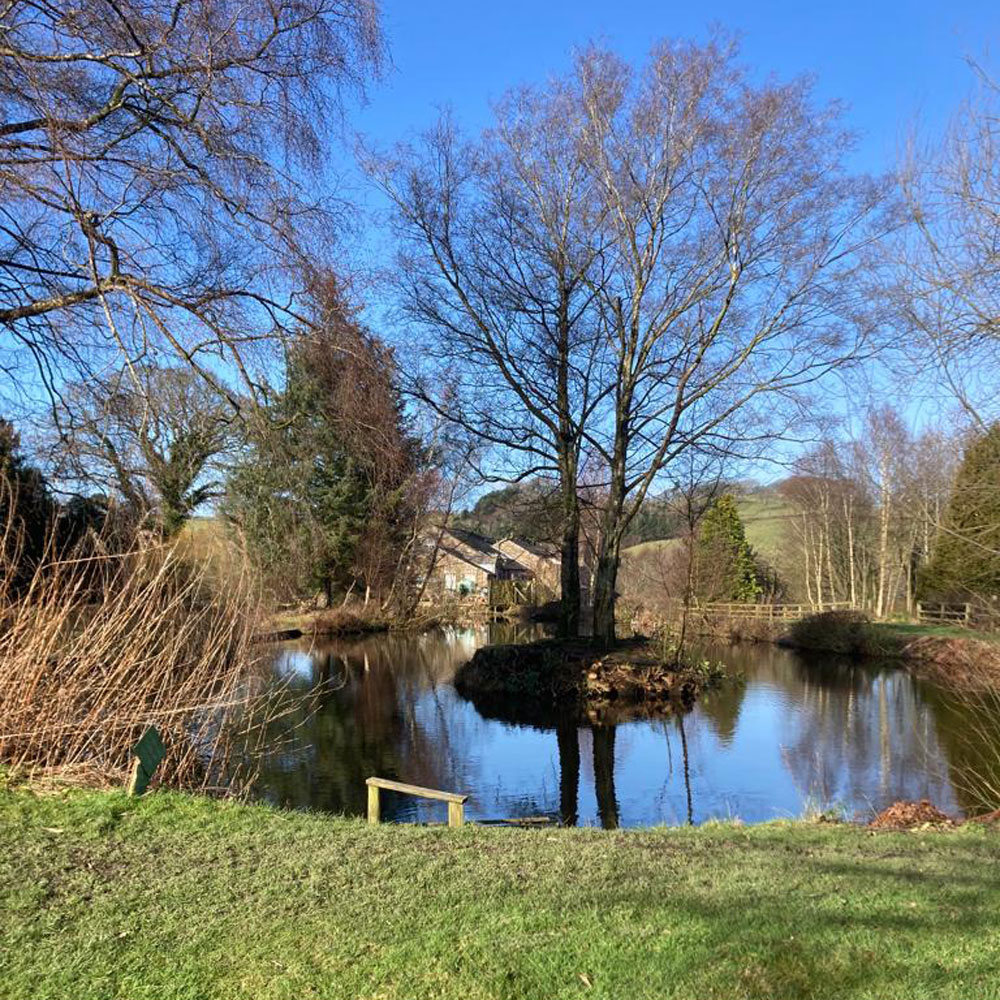
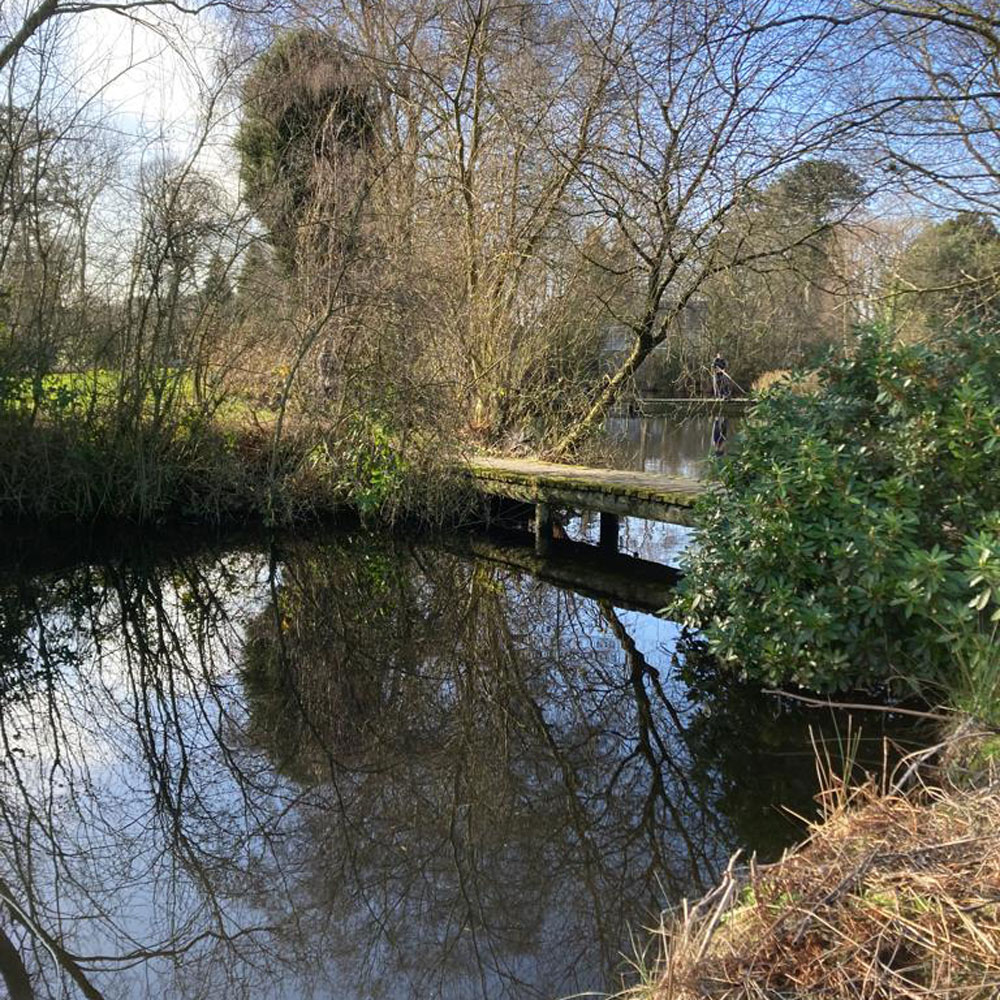
We started on the first couple of platforms down the Bridle Bank. It was flat calm, so we both started on the indicator. I use this on an unfamiliar fishery to check the depths by using a fly that is too heavy for the indicator. If it pulls under, I know the bottom is deeper than the set depth and vice versa if it’s shallower. Once you’ve had a search around, you can then fish the fly back with a conventional retrieve. Depth searching is not the best way of catching fish, but teaches you a lot about the lake and there are a few times it pulls under too quickly or shoots off to the side, and you can get a bonus fish as you learn your way around the lake. It is time well invested.
Jason got a take first cast on his indicator/buzzer combination, so was full of hope, but nothing else thereafter. Straight onto the next two spots.
We made our way down the Brindle Bank platforms and fished the areas around the inlet. One thing obvious at this end was that it was really shallow. Nothing. A quick chat with one of the lads already fishing told us it was hard going. They’d had one fish between them, about 3ft down around the Witches Hat area. This wasn’t the greatest surprise as it was the first frost for a while and any sudden change in weather can knock things dead while the fish readjust. If you go fishing after ten successive bone-chillers, it is generally fine as the fish become accustomed. I guess the first frost is just a bit of a shock to the system when you’re cold blooded?
And it’s not just frost. Any sudden change in a settled weather pattern may have a negative effect on the fish. Including changes in wind direction and sudden temperature increases. It’s my most played out excuse for failure, that’s for sure.
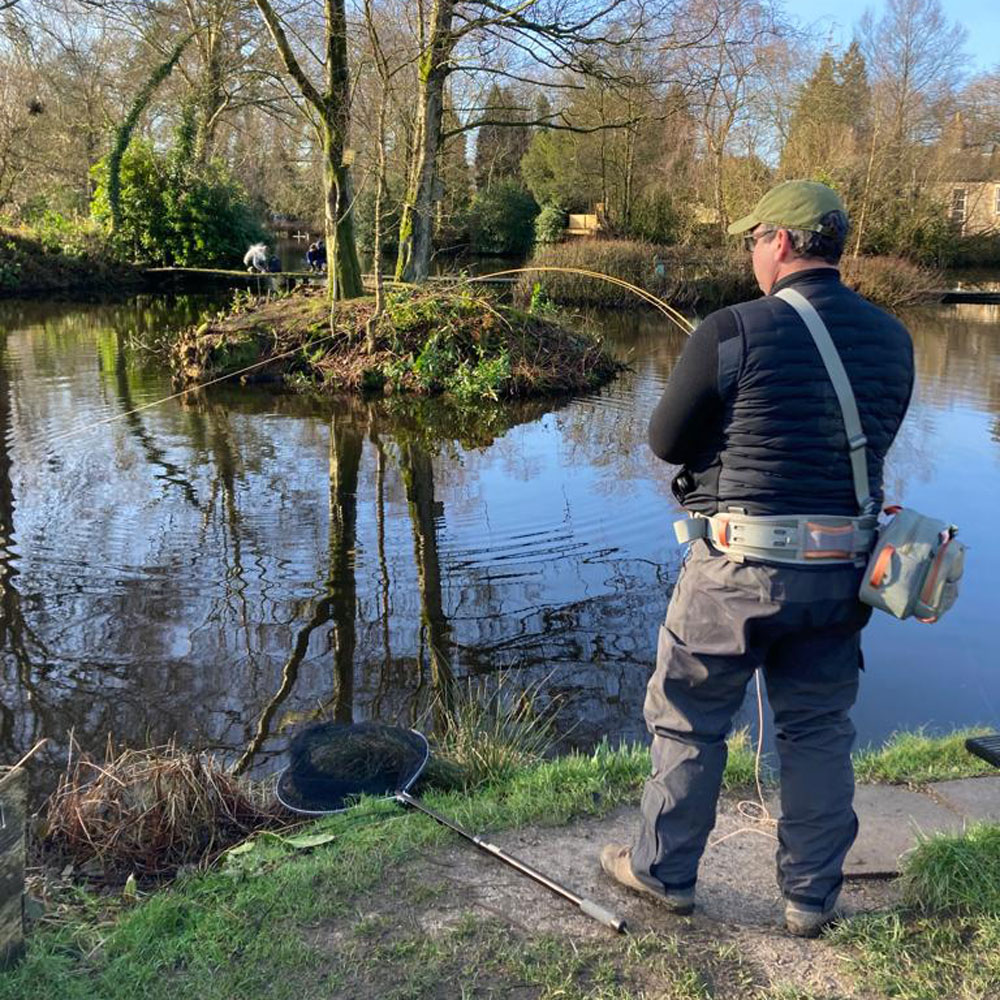
Back to the fishing. We were gradually making our way around the fishery and not a lot was happening. I tried an intermediate line and small Cat’s Whisker in the Mill Pool, a deeper spot in the far corner of the fishery. It did get a couple of definite taps, but that’s all they were, and the signs were a little ominous.
Just before the Mill Pool, I found a deep little spot near the outflow in a narrow neck between the bank and an island. The takes on the indicator were very gentle and non-committal, but they came every cast for ten minutes, so it was a step in the right direction. Maybe the Slushy Bug I had been fishing was too big on a cold day, so I went right down in fly to a Size 16 Buzzer and patted myself on the back, this would get a fish straight away. It didn’t get a take.
It was just before 11am that a tiny breeze got up and everything started getting a little more serious. It was just a movement of air rather than a ripple, but it changed things for the better almost straight away. Jason was in a spot on the outer bank known as The Swim, and he started to get takes first. Proper takes on a small black buzzer about 4ft down. He missed his first two, but then lifted into our first fish of the day.
It fought hard, so it was a surprise to see it wasn’t a big fish. Maybe 1lb 8oz? But it was a Spartic Trout in the absolute peak of condition. The white edged and very sharp edged fins said this fish had been in a long time and done really well. We were both chuffed to see a Spartic, and Jase was off and running.
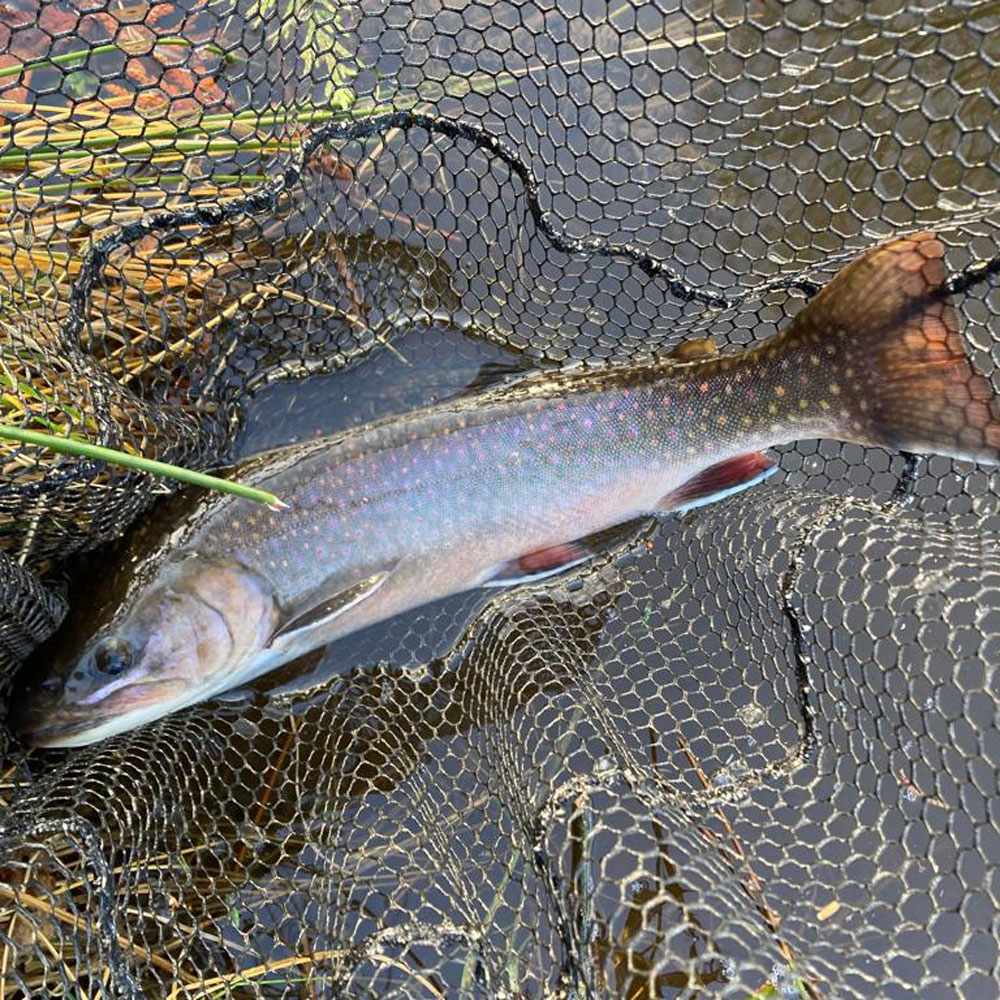
It took ten more seconds before he was into his next fish. This time a lovely dark 2lb rainbow that took the buzzer as it stopped sinking. Another fish that showed signs of being a resident that had adapted to the obvious rich feeding.
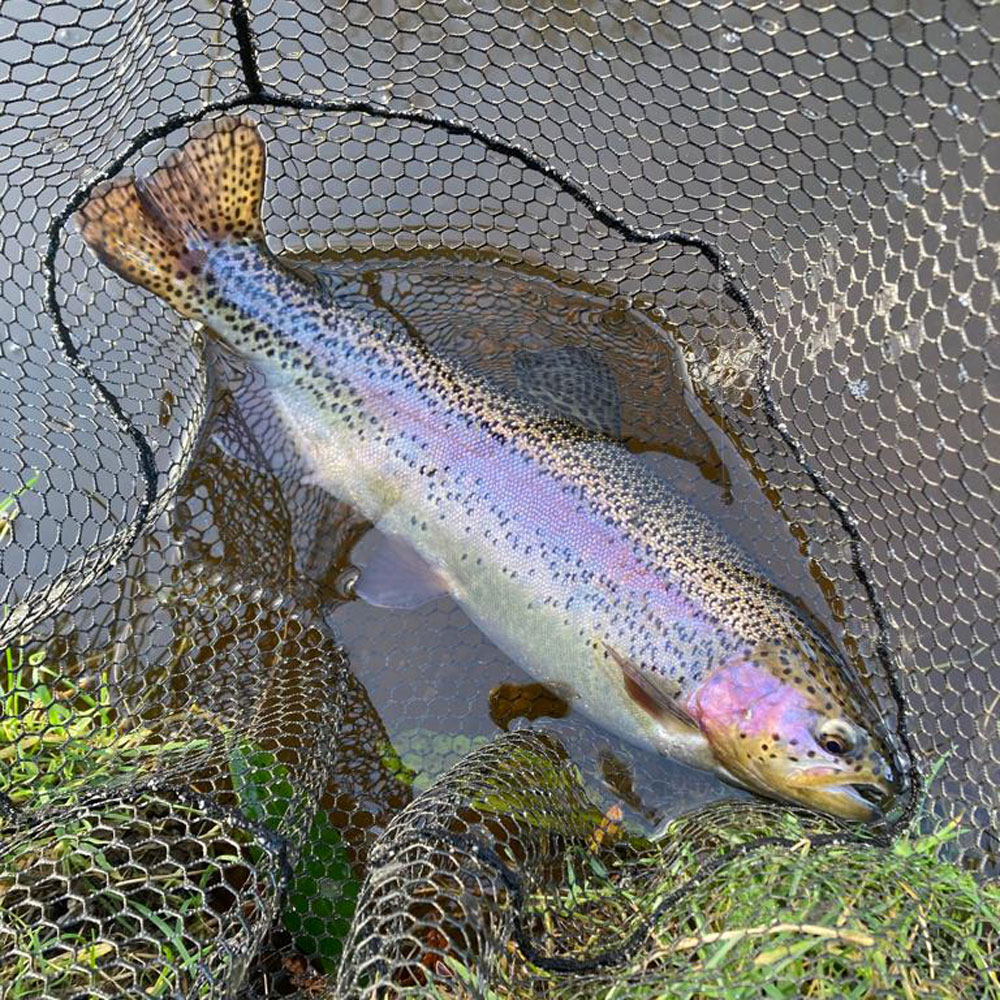
He was on fire now, so it was no surprise when the indicator dipped again on the very next cast. This time it was a heavier fish, which stayed deep. It took longer than normal to get a look at what he had, but in the end it was a brownie about 4lb the net went under. Yet another resident fish that fought long and hard. He just needed a Blue and a Tiger for the Bankhouse Five Timer.
Having stood watching all this, I decided to go onto the main island and fish back towards the same area as Jase. Obviously, the Black Buzzer was working, but as I already had a Black Slushy on, that went out first. It took ten seconds to work, and I also joined the Spartic Trout Club. There’s definitely something about these fish in the fight, and they look incredible. This one may have gone 2lb.
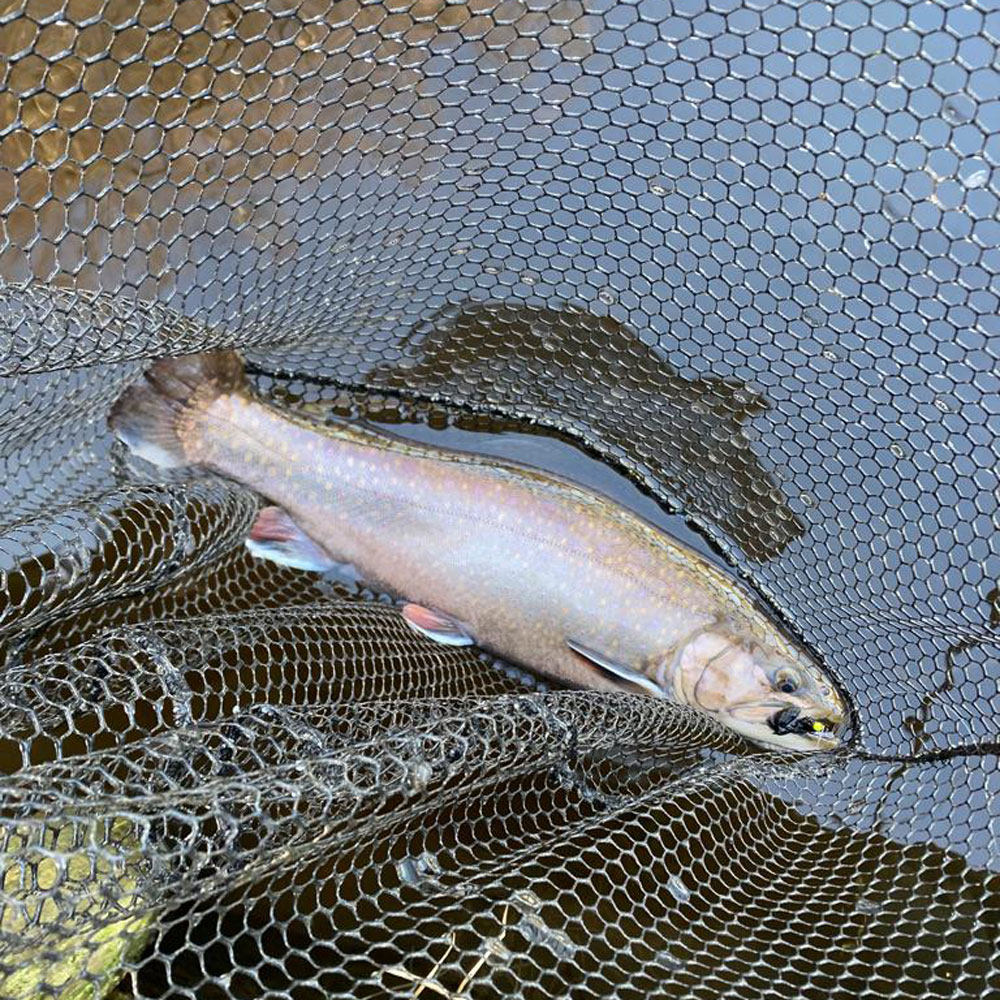
While Jase was still getting occasional takes, the next 20 minutes were slow compared to the previous 20. But there were still fish in the area. According to the map, there was an area to the right of my platform that held deep water, but a tree was getting in the way. After a few failed attempts, I managed to get a half decent cast into the area and got a take straight away. This fish went like a rocket and eventually snagged me. Not something you get with trout very often, but I somehow managed to get the whole set up back. The hook seemed fine, but still got sharpened just in case. A rub of the line said it was in good shape as well. I was sure it was going to need replacing, but there wasn’t a mark on it.
Straight back into the hard to reach area it was. And another bite as soon as the fly hit the 4ft depth it was fishing. This time I missed it, I never felt the fish. One of the best tips in this situation is to put the fly straight back in the same place as quickly as you can. Don’t delay. If you haven’t felt the fish, it won’t be spooked and will most likely be doing a circle after its drive by. Don’t disappoint it when it comes back for a second look. It’s surprising how many times this works, and today was no different.
This was an altogether different beast, though. From the water it moved on the surface, it was obviously big. A couple of huge flashes down deep confirmed this, and a couple of slow but powerful runs had the six weight fully arched. Perfect. With the initial barrage out the way, Jase came round to video what turned out to be a personal best brown trout of 14lb. And it looked every bit of that. Although a really thick set, fully finned fish, I never felt out of control and there’s no doubt a slightly longer rod helps tire fish easier.
While we’re on the subject, let’s compare a 9ft 6in and a 10ft rod. There are subtle differences. The shorter rod is lighter, will cast a tiny bit further and handles better in a wind. The longer rod wins on line pick up when striking and tiring the fish a little easier. As I usually fish close in, I’d go for the 10ft most times, but you may be different. There are certainly enough choices in the Cadence Fly Rod range to give plenty of options.
After a few minutes, chat, we both started fishing again and got a couple of takes each soon after. But things started to get harder almost as quick as they got easier only 45 minutes before. We tried different flies and different lines and different methods, but it was like the curtain had come down. Over the next 3 hours, I found a few of those dimpling, unhittable takes fishing from the Witches Hat back towards the house. And had one almost under the bridge that leads onto the main island. But that was it for the day. Jason was very similar. We tried everything, but the fish were having none of it, and we finished as the sky started to darken.
It had been a fantastic day’s winter fishing in a glorious setting. Both of us agreed it had been one of the most relaxing days in ages with the weather as it was. Peace and quiet all day. Five cracking fish landed and more lessons learned. Even on a cold winter day, stick with it and they may switch on. Even if it is for a very small amount of time.
The next time you go fishing, you might want to give Bankhouse a try.
For more information on Bankhouse Fly Fishery visit them here.

